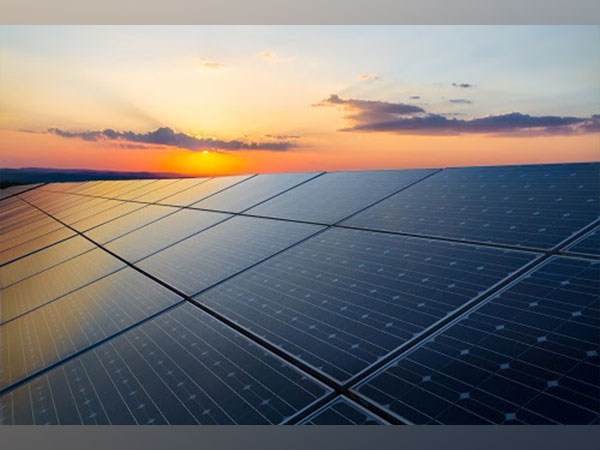
New Delhi: With the world’s most extensive plan to expand renewable energy and its ambitious target to achieve fifty percent of the electricity requirements through non-fossil fuel-based energy by 2030, India is emerging as a global leader in harnessing green energy space.
Experts allude that the booming renewable energy landscape is the outcome of three key factors: the active involvement of the Indian government, expanding domestic market and rising consciousness about renewable resources, and advancing Indian R&D capacity in the green energy sector .
Government-launched initiatives like the National Solar Mission, the National Wind Energy Mission, the Integrated Energy Policy, and the National Green Hydrogen Mission are playing crucial roles in building a strong policy framework for the green energy space. Permitting a 100 percent Foreign Direct Investment (FDI) under the automatic route for renewable energy projects is another positive step in the direction.
Policy tools like Production-linked Incentive (PLI) schemes for solar PVs with an investment of US$ 2.9 billion are steering the economy toward a greener future. Micro-inverters production is another field in which India is performing exceptionally well. These advanced solar inverters market is expected to grow at a CAGR of about 16 percent from 2022 to 2029, making it a $530 million sector by 2029 .
The wind power capacity, which is currently the fourth largest globally, is expected to grow by 60 percent to 71 GW by the end of this decade. These policies, on one side of the market, create the necessary supply stream by adequately incentivizing the producers and, on the other side, ensure enhanced demand by bringing about environmental consciousness among the consumers. These policies ensure reduced production costs through proper incentive mechanisms, enabling expansive market adoption of green energy.
The decree of the current policy regime is to expand renewable energy market goals towards low carbon intensity, reduced dependence on fossil fuel imports, and market leadership. India is a crucial centre for wind energy manufacturing.
The robustness of its manufacturing capacity is evident from the fact that it is one of the only five countries that can produce all six major wind turbine components . Besides, the Net Zero Emissions target by 2030 by Indian Railways is projected to reduce emissions by 60 million tons annually .
On the domestic consumer market front, India has already seen a booming EVs market, with ever-rising sales of electric cars and two-wheelers. As of March 2023, about 2.3 million electric vehicles are running in India, with more than one million in each category of two and three-wheelers . Public transport in cities like Delhi and Pune has become virtually free of CNG buses, with a large influx of EV buses.
Through different government schemes, these buses are also making their way in small to medium-sized cities of up to 4 million population . In less than a decade, under the Faster Adoption and Manufacturing Electric Vehicles (FAME) III incentive program, 800,000 diesel buses will be replaced by EV buses on Indian roads . The plan for the same is already in the final stages .
India has significantly progressed in the path of decoupling its economic development from greenhouse gas emissions. It is anchoring the global economic development narrative to a model less dependent on a carbon-intensive approach . This presents an alternative development model that challenges the developed countries' established path and provides environmentally sustainable solutions to emerging economies.
It is a matter of felicitation that in FY2024, renewable energy was responsible for 70 percent of the 26 GW of new power generated in India, and the total installed power capacity has reached 442 GW, with 33 percent of it being contributed by renewable energy sources. Moreover, on the trade balance front, India’s exports of wind turbines have almost grown twice of that in 2019. Moreover, solar imports in India rose by 227 percent (YoY) to $1.8 billion in 2023 .
Another important aspect of India’s green energy revolution is international cooperation. India has been at the forefront of organizing a platform for global discourse and cooperation on energy issues like the International Solar Alliance (ISA), and the resulting Global Solar Fund was created in which India contributed around $25 million as an initial corpus fund.
Similarly, the Global Biofuel Alliance is another multi-stakeholder alliance of Governments, International Organizations, and Industries initiated by India during its G20 presidency. The purpose of the Alliance is to expedite the global uptake of biofuels via capacity-building exercises across the value chain, technical support for national programs and promotion of policy lessons-sharing, technology advancements, and intensification of utilization of sustainable biofuels.
Thus, India has not only built its domestic capacity in renewable energy to ensure energy security, but it is also aggressively involved in facilitating global cooperation in the promotion of green energy for a sustainable future.
Experts are of the firm belief that the upward trend in the renewable energy market is not a sporadic ephemeral boom but rather a steady and sustainable phenomenon .
With the rising consciousness about sustainability and global urgency to meet SDG goals, the need for economies to provide a green flare to their economic models of production and consumption is non-negotiable. In this light, India is accelerating forward aggressively for transformative and multi-dimensional growth in green and clean energy space. Such swift advancements and expansion of green energy space in the context of the rising need for cleaner energy sources make it no less of a new revolution.